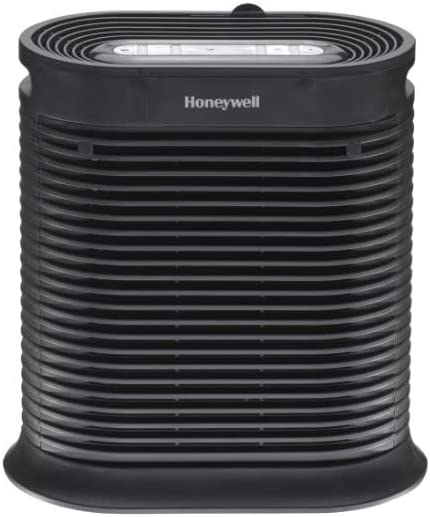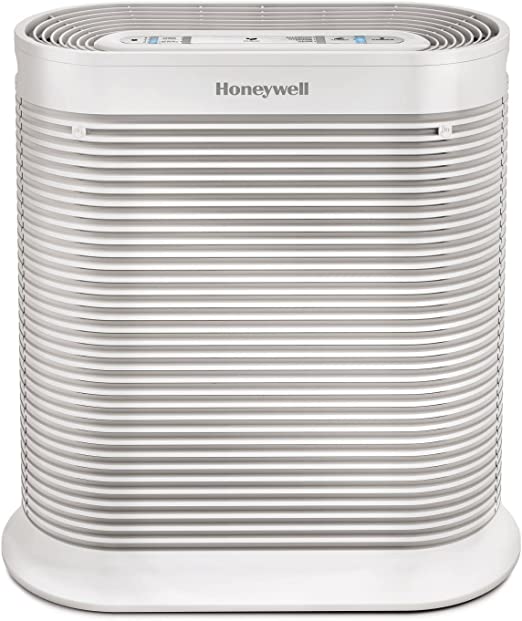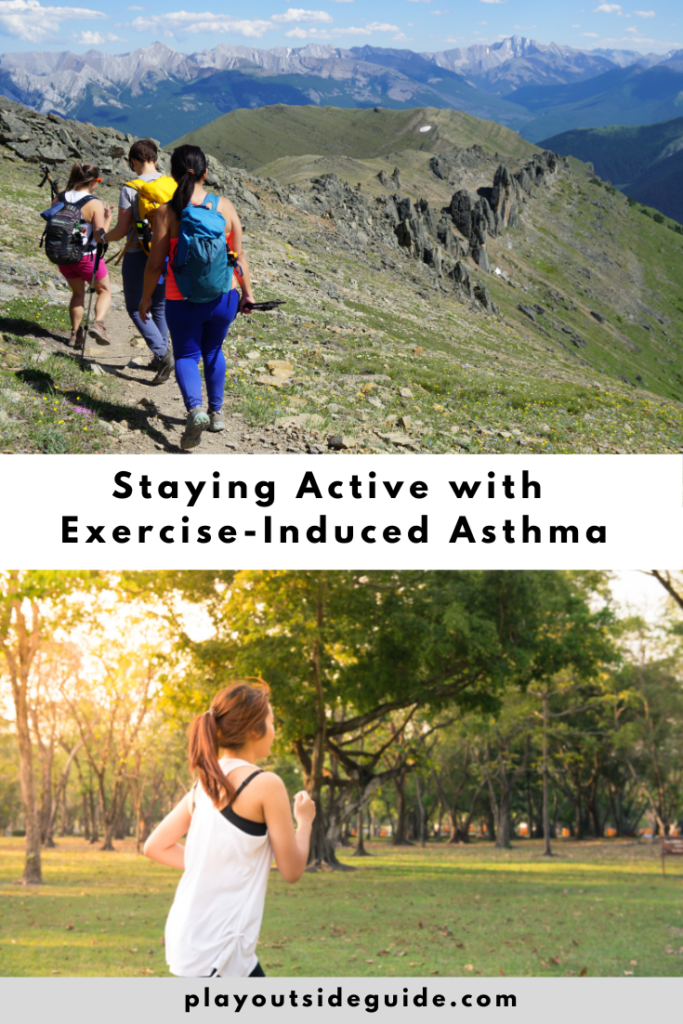Tips on managing exercise induced asthma so you can keep active in all seasons.

Approximately 3 million Canadians have asthma and “60%… view their asthma as a barrier to participating in physical activity”1. Although the risks of asthma can be severe, most individuals with asthma can lead healthy, active lives if they control their asthma with a few lifestyle modifications. As a lifelong asthma sufferer, I know how frustrating and scary it can be to be running or hiking and suddenly unable to breathe, but I also know how much better my life is when I am able to do outdoor activities I enjoy. By avoiding triggers and not overexerting myself, I am able to hike, bike, ski, paddle, and run year round (unless pollen is crazy high or the air quality is poor due to air pollution/forest fires).
Following are some lifestyle changes that have helped me stay active with exercise induced asthma. Please note that the most important thing you can do for your health is make a treatment plan with your family doctor and stick to it. Your doctor can advise you on preventive and treatment measures based on the frequency and severity of your symptoms. Once your asthma is under control (you are not using your inhaler more than 4 times a week), you can increase your activity level.
Please note that I am not a medical professional and am only sharing what has worked for me. If you have been diagnosed with asthma, please speak to your family doctor before initiating or ramping up an exercise program. If you suspect you have asthma, please see your family doctor.
How to Stay Active with Asthma
- CARRY YOUR RESCUE INHALER & KNOW HOW TO USE IT. If you start to have symptoms while exercising, STOP what you are doing immediately, use your rescue inhaler, and do not resume exercise until symptoms have ceased. If symptoms are severe, take another dose and call 911 if necessary. After an asthma attack, take it easy for a few days (your airways need rest!).
- IF YOU HAVE BEEN PRESCRIBED CONTROLLER MEDICATION TO BE USED DAILY, USE IT AT THE SAME TIME EACH DAY. Some medications for Exercise Induced Asthma (EIA) work best when taken 12 hours in advance so optimize your meds schedule. If you work out in the morning before work, take your medication before bed.
- USE AN INHALER 10-15 MINUTES BEFORE EXERCISE. Use the one your doctor has advised you to use.2
- START WITH ACTIVITIES YOU ENJOY. Yoga, walking, and weight lifting are just a few exercises you can start with (please check with your doctor first, though). If all goes well and your asthma is under control (you are not using your inhaler more than 4 times a week), consider longer exercise sessions or more intense activities. Just listen to your body and remember to STOP activity if you start having symptoms and use your rescue inhaler (Rule #1).
- EXERCISE WITH A FRIEND. Committing to a weekly walk/yoga class/etc. with a friend or club means more fun and accountability. It’s safer too (there’s someone to call for help if you need it).
- WARM UP SLOWLY. I find it takes me a good 15 minutes to get into a run or hike. If I push it too hard at the beginning, I get wheezy right off the bat and have a much harder time moving at a decent pace. The Canadian Asthma Association also recommends a 10-15 minute warmup.
- STAY HYDRATED. Drinking water throughout physical activity (and before and after) will help prevent airways from drying out3 (dryness is an asthma trigger).
- PACE YOURSELF. Although I have asthma, I can still do long hikes with considerable elevation gain; I just have to pace myself. I find going at a steady pace is much easier on the lungs than stop and go hiking.
- COOL DOWN. Take a few minutes at the end of an exercise session to slow your pace and your breathing.4 I forgot to do a cooldown after strenuous mountain biking recently and had asthma symptoms (choking and phlegmy cough) for the next hour and a half. Remember the après-exercise cool down!
- AVOID ASTHMA TRIGGERS. Asthma triggers include illness, allergens, cold air, hot air, very high or very low humidity, fragrances, exhaust, industrial emissions, cigarette/forest fire smoke, and chemicals (cleaning supplies, soaps). While we can’t control the air quality, we can reduce the intensity of physical activity during the worst times of year or take a break if need be. While some people may be able to work out in a gym during peak allergy season, others may not due to pet dander or scented products used by other gym users.
- LOOK AT THE AIR QUALITY HEALTH INDEX (AQHI) WHEN PLANNING PHYSICAL ACTIVITY. The Canadian Asthma Association recommends that people modify exercise plans when the AQHI is 4-10 for the “At Risk” Population, or 7-10 for the general population. The Canadian Air Health Quality index website is airhealth.ca.
- REDUCE THE AMOUNT OF AIR POLLUTION AND ALLERGENS YOU INHALE. If air quality is poor, take a rest day or work out inside with a HEPA air purifier (affiliate link) on. HEPA filters remove 99.97% of wildfire smoke, danders, dust and pollen (as well as 99.9& of viruses and bacteria). If you have to go outside – to go to work or school – wear an N95 mask. N95 masks filter 95% of pollutants out of the air and virtually all pollen if they fit properly (most pollen grains are 10-50 microns, and N95 masks filter particles as small as 0.3 microns).
- DON’T EXERCISE WHEN SICK. If you have asthma, you are more prone to pneumonia, a cold and flu complication. If you have a respiratory illness, take it easy until you are feeling better. Your lungs are already taxed and need a rest. Asthmatics are advised to get their annual flu shot and should consider the pneumococcal vaccine (pneumonia shot).
- CONTROL YOUR ALLERGIES. Allergies are a major asthma trigger, so you should be sent for allergy testing if you have been diagnosed with asthma. Your doctor or allergy specialist can counsel you on dealing with allergies, but I have found it best to avoid contact when possible (cats, dogs) and medicate when I can’t (ragweed pollen and molds in the fall).
There are several nondrowsy antihistamines on the market, but if you do not like taking a pill every day, consider topical medications (eye drops and nose sprays) as they do not cause drowsiness and tend to have fewer side effects. If you go the topical route, consult with your doctor to ensure you do not use drops/sprays that will cause a rebound effect. Opticrom eye drops and Flonase nose spray are a couple topical allergy treatments that no longer require a prescription. Saline eye drops and saline nasal spray are helpful in rinsing allergens from eyes and nasal passages if you do not like medicated eye drops and nose sprays.
Breathe and carry on. You can do this! Just start slow and have fun!! And remember Rule #1!


References
1, 2, 3, 4 Breathe Easy: A Guide for Being Active and Healthy With Asthma, Asthma Society of Canada
For More Information
Please visit the Asthma Society of Canada.
A good resource for children with asthma is Asthma Kids. The Canadian website was developed for kids and has a mission, code word, and games.

Related Posts
- Staying Active with Allergies
- Surviving Winter with Raynaud’s
- Staying Active with Seasonal Affective Disorder


